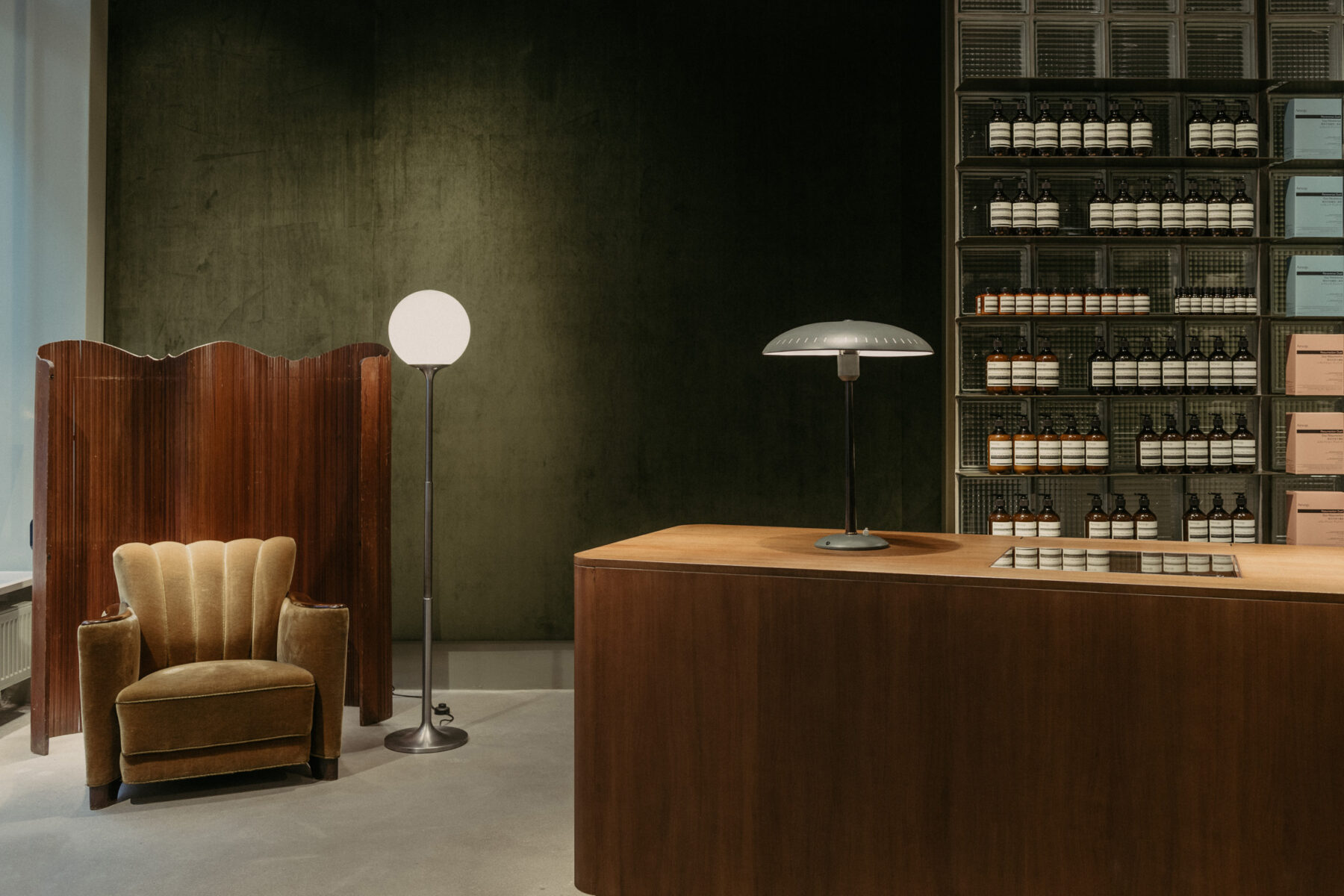Creating interior design that sits well in its surroundings is a common challenge for architects. But translating a place’s historicity into the design is an even bolder undertaking.
Barely no other place manifests the history of an entire country like Nikolaistraße, a street that connects Leipzig’s main station and its center. Many quintessential classical pieces premiered inside the Nikolai Cathedral, which also signified the starting point of a peaceful revolution. The church was where, in the fall of 1989, the Monday protests were born, which led to the dissolution of the German Democratic Republic. A hop, skip and jump away, in Halle, the architect Paul Thiersch, established Burg Giebichenstein as a university of art and design. His great grandson, also a trained architect, arrived after the 1990 reunion to explore the region, and discovered a new world: “Halle looked grim, there was grey carbon dioxide everywhere; only smoke and steam rose from the chemical plants,” says Georg Thiersch.
Residing in a historical building, one of many late 19th-century buildings dotted along Nikolaistraße, is the Aesop Nikolaistraße store. The Australian skincare brand has opened signature stores in over twenty countries worldwide; with a dozen of them located in Germany. And while no single location looks like the other, two have an intrinsic connection: the twin-stores Aesop Luitpoldblock in Munich and Aesop Nikolaistraße in Leipzig, each reflecting layers of history along with the spirit of their city. “I was reluctant about whether we should do this for some time,” says Thiersch, referring to the conception of the Aesop Nikolaistraße store that he worked on together with Aesop’s design team. “But sometimes, when you have an urge, you have to go out on a limb and just pursue something,” This urge meant attempting to catch the spirit of the street, the past, and the present in the nuanced design elements, although he had only experienced the GDR from the opposite side of the wall. While some Leipzig locals may understand it as an affront, Thiersch believes that “when you’re really into the topic and say: I’m aware that there are borders in people’s minds, the least you can do is make people aware of the phenomenon.”
Embodying the historical, sociological, and aesthetic components of their surroundings, Aesop Nikolaistraße and Aesop Luitpoldblock have been conceptualized as twin stores.
“Of course the concrete complexes looked brutal, yet they weren’t meant to be brutal. It’s important to understand that they were part of a bigger vision.”
To give the store a fresh look that doesn’t withhold nor glorify its past was a risky move; together with Aesop’s VM & Store Design Manager (EU) Jean-Philippe Bonnefoi, Thiersch has developed a concept for the main room on Nikolaistraße, which has windows to both sides and through which daylight refracts in various colors. The space is split into different areas by steel frames fitted with glass bricks reminiscent of fencing elements. This wall creates a border, yet there is no front or back: customers can roam freely. Customers’ silhouettes appear between the product shelves—reminiscent of the movie The Lives of Others. The construct plays with privacy and observation; it dissolves the different sides and negates the question of who is in the right or wrong.
While the design isn’t trying to glorify the past Thiersch does feel that the serial, often systematic approach to the design of indoor and outdoor spaces within the GDR is unrightfully condemned. “Of course, the concrete complexes looked brutal, yet they weren’t meant to be brutal. It’s important to understand that they were part of a bigger vision,” he explains. The aesthetic of the everyday reflected a vision for a better society, cast in concrete: “Topics were addressed that will become relevant again: How can we house large amounts of people in a cost effective way, and consider high living standards at the same to time?” According to Thiersch, you can argue about the way it was realized, and have to note the fact that many innovative designs were crushed by the system, but “the layout of the complexes is ingenious, and so is the furniture,” he argues. “Our mindset would benefit if we accepted how elaborate some solutions were back then.”
However, Thiersch and the Aesop team never intended to reference or categorize history but to seize past design phenomena and elevate them to a new aesthetic level. “The goal was to create a thorough spatial impression by bringing things together in a way where they are perceived neither pleasantly nor unpleasantly.” The surface was cladded in deep green velvet and while this material connotes luxurious heydays of the upper class, its color is also suggestive of a public office. There are further contrasting elements: a wooden dining table symbolic of social gatherings and glass partitions; a century-old room divider and a velvet armchair, an emblem of power and wealth, and a quiet witness of the dark sides of socialism.
Aesop Nikolaistraße, Leipzig
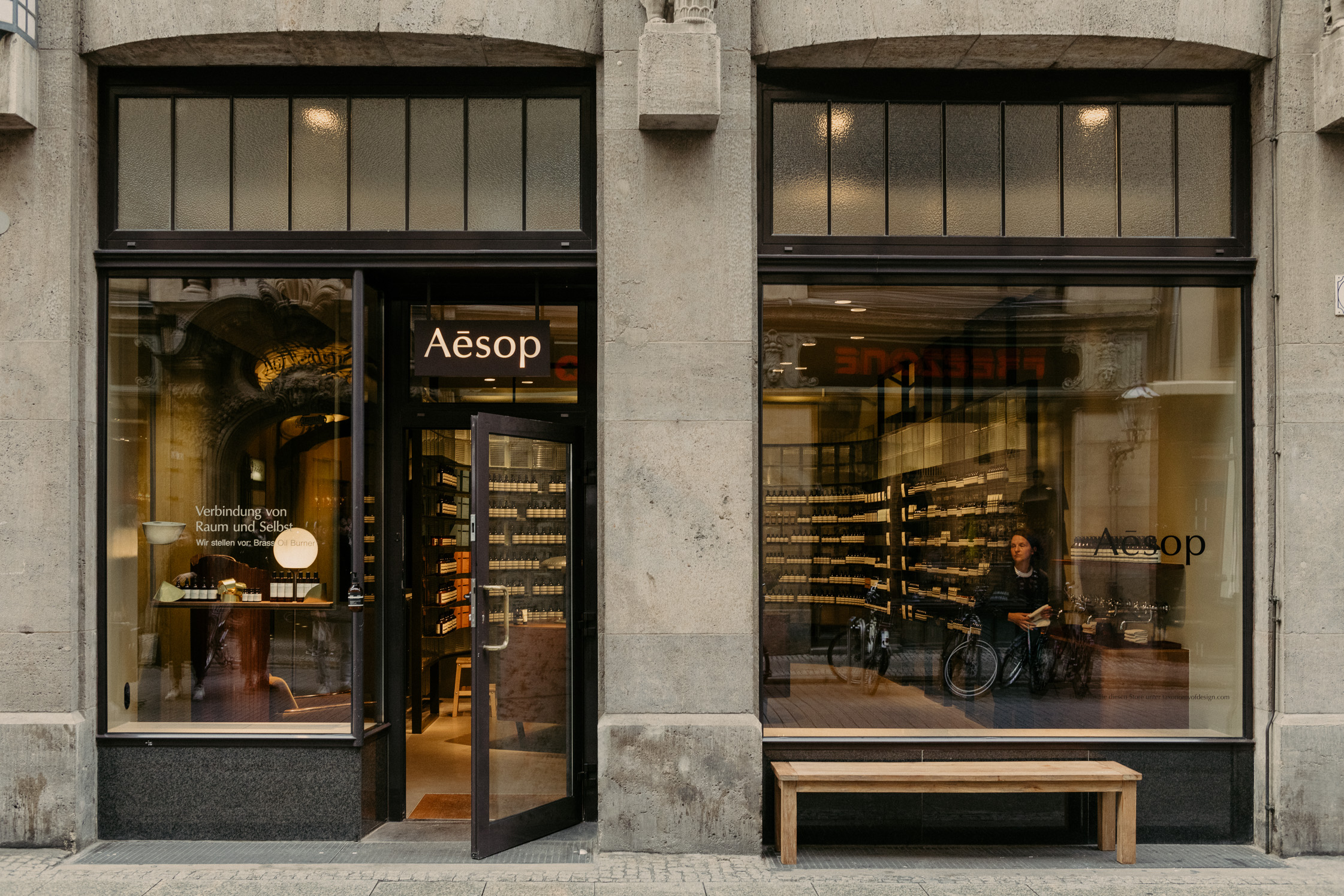
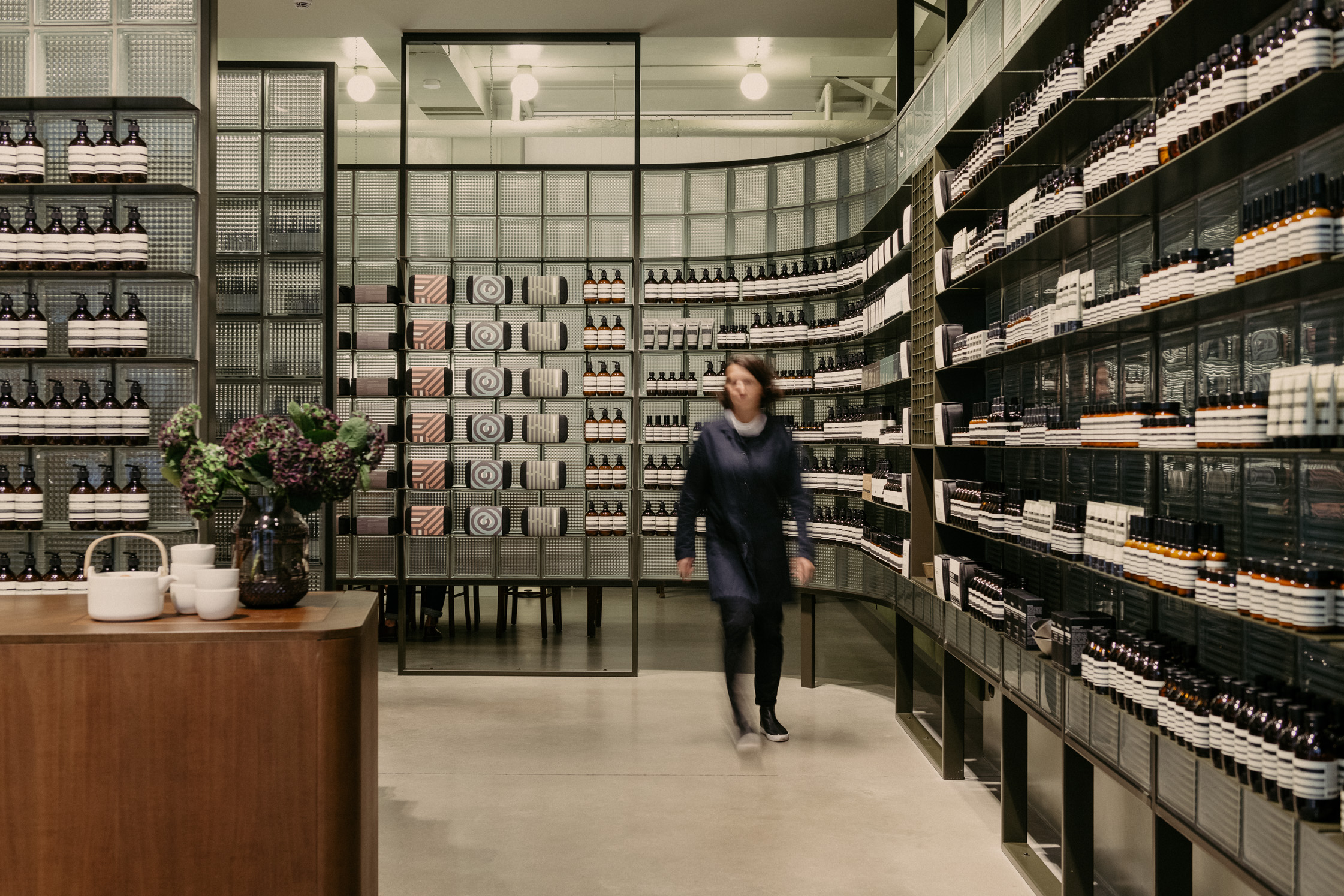
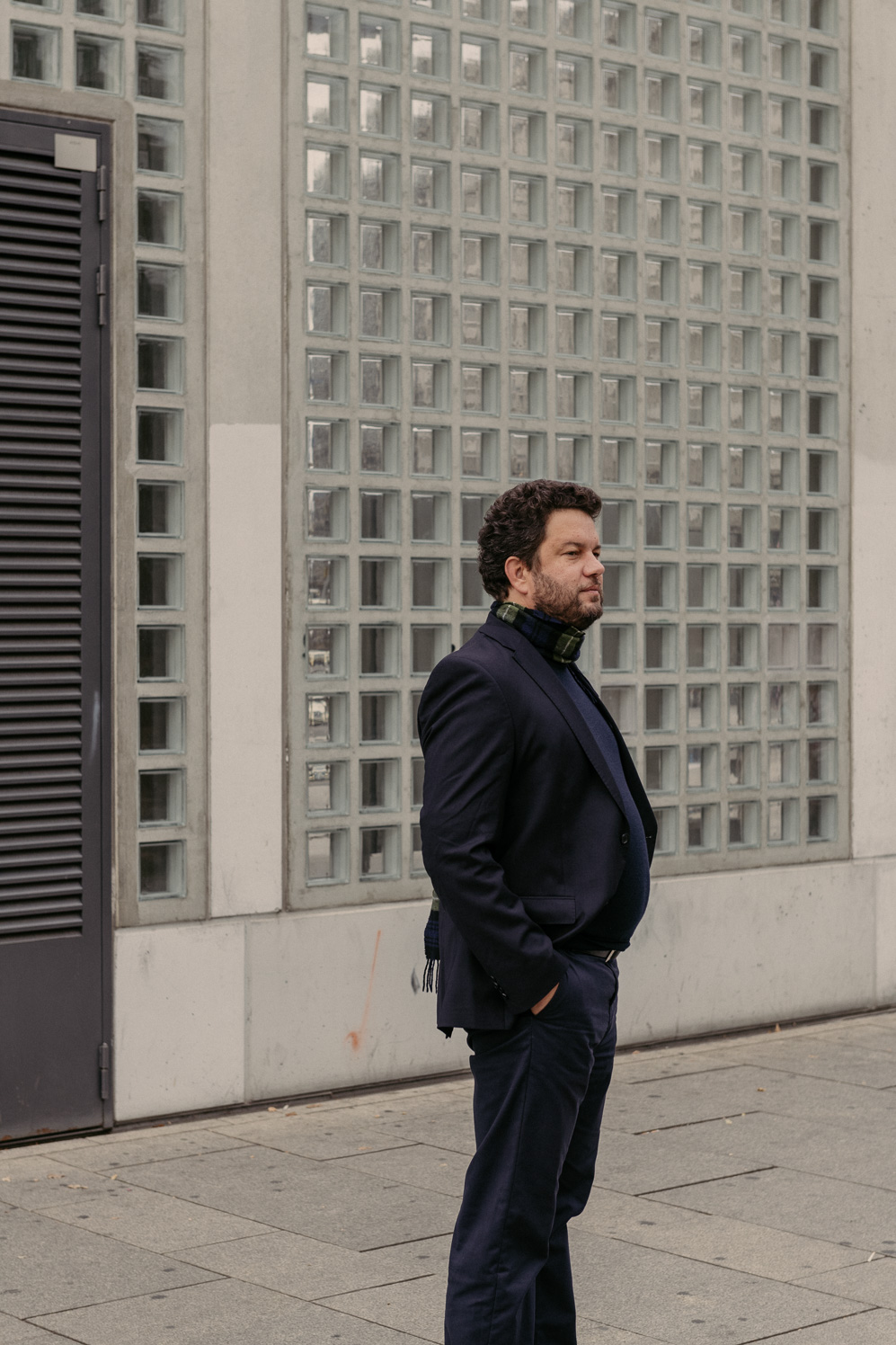
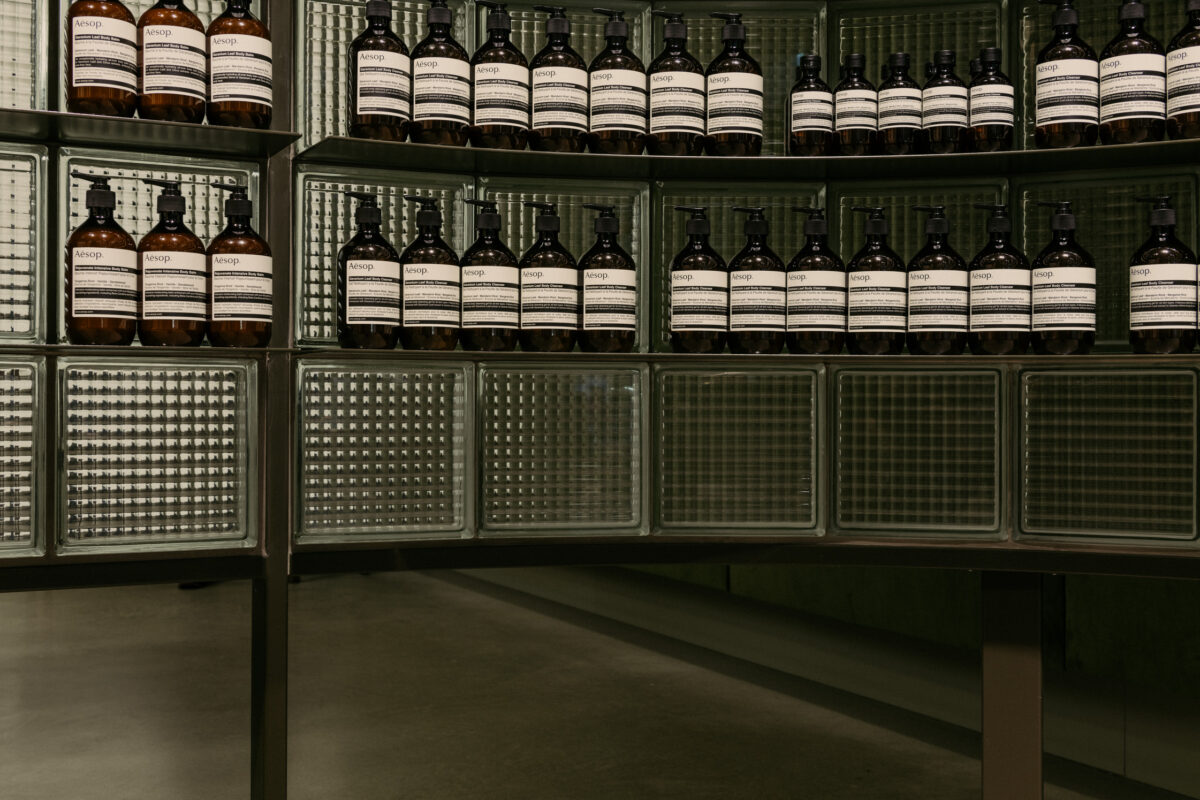
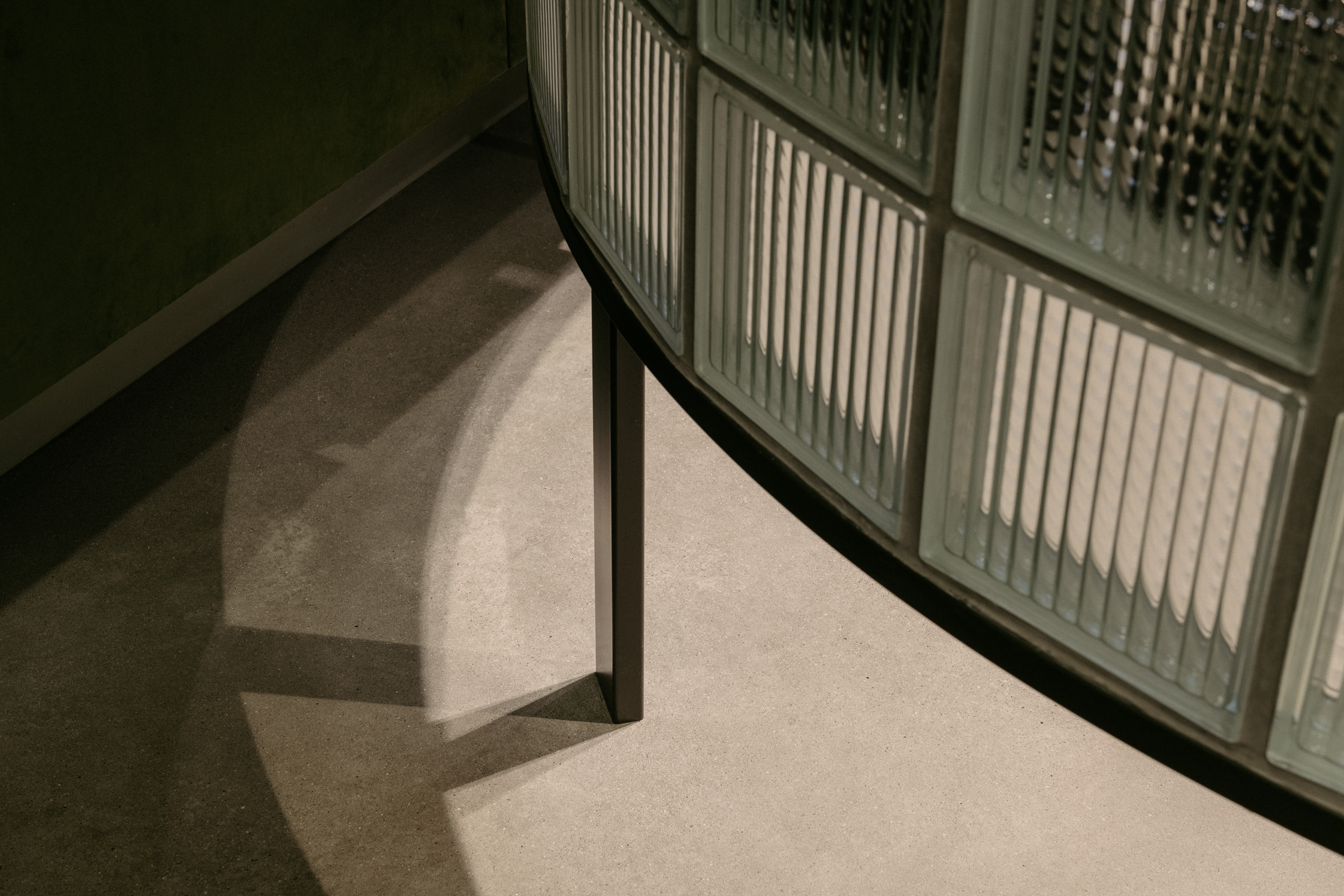
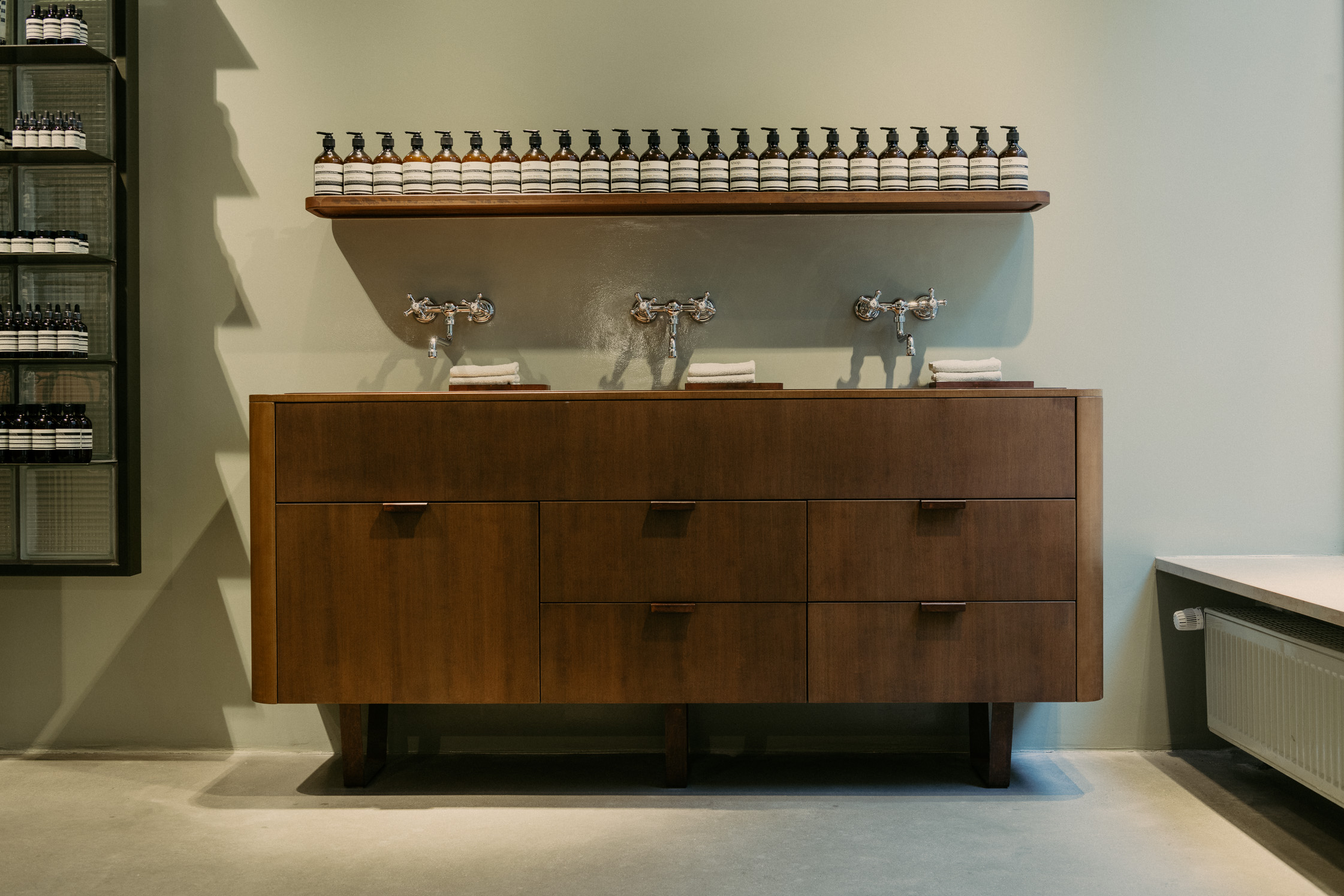

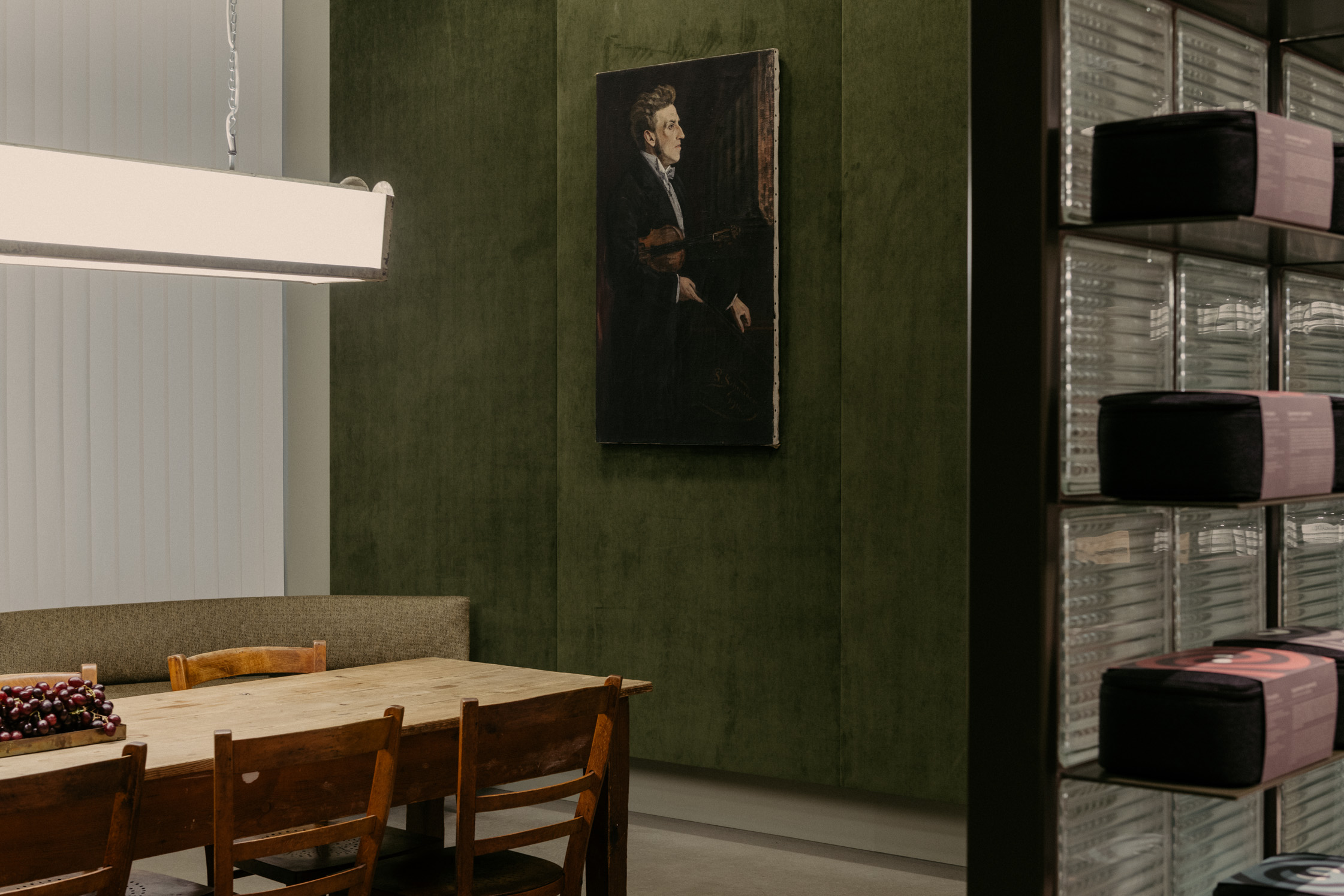
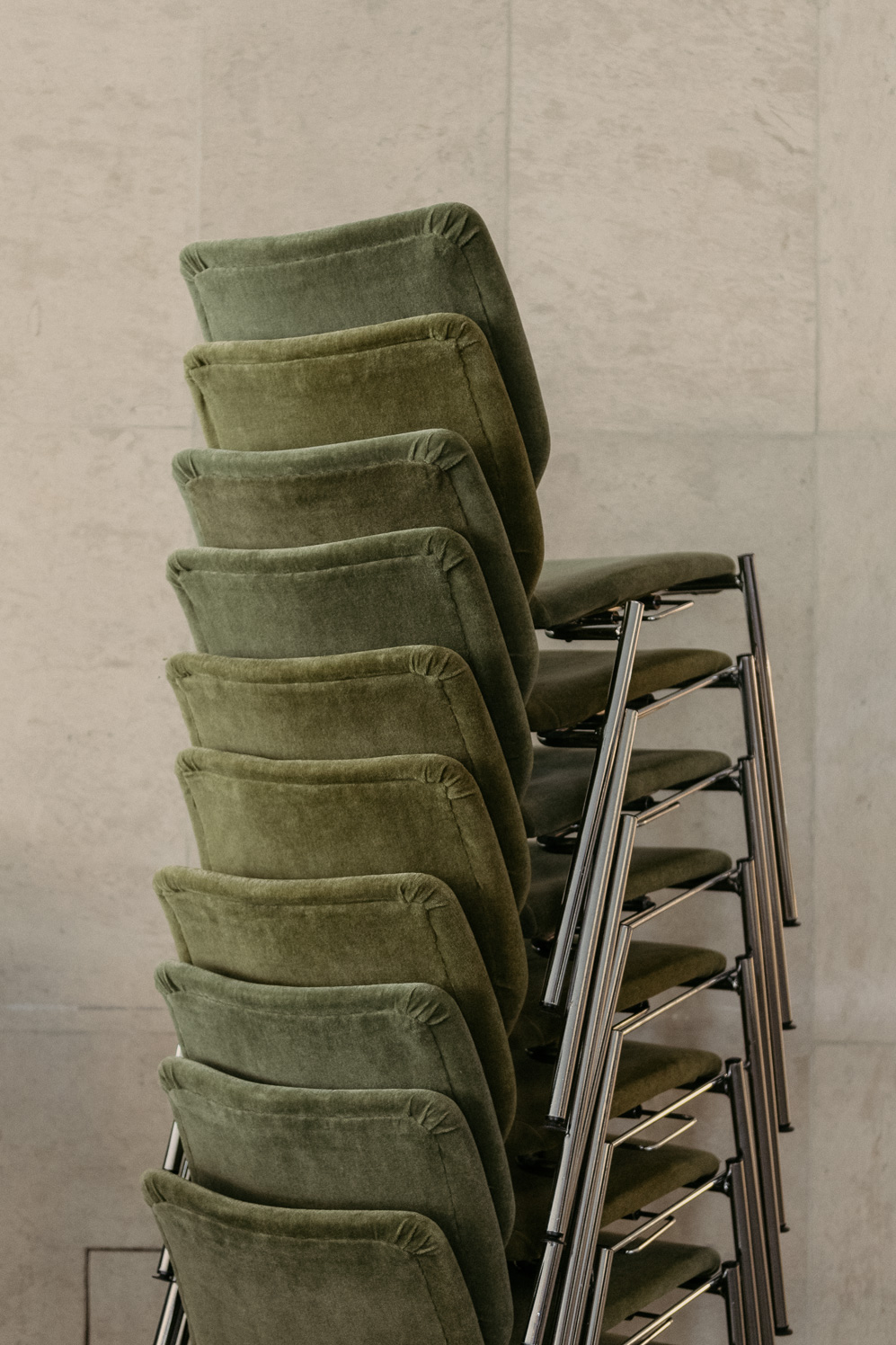
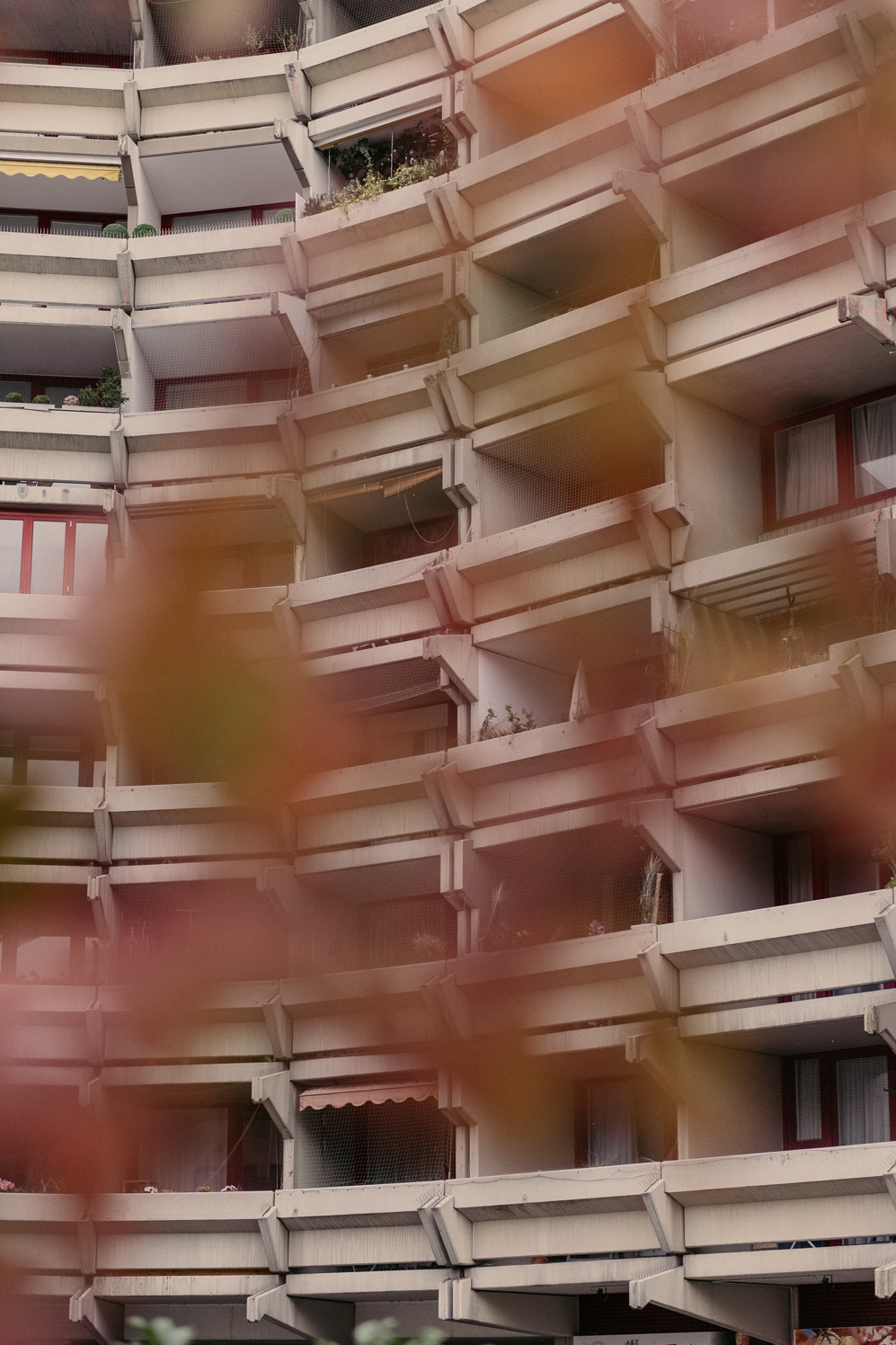
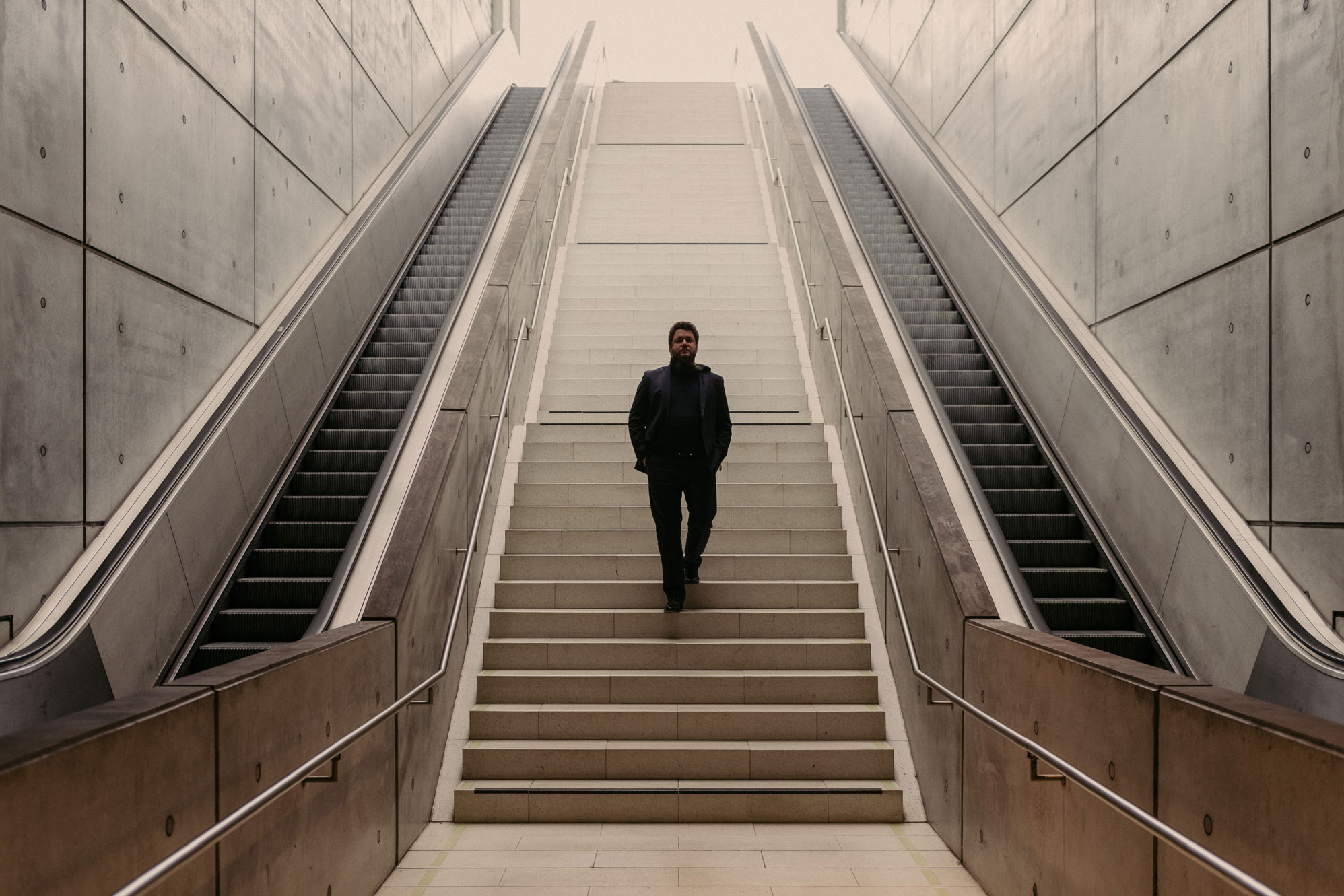
“Each element plays its role to tell a story, stories that aren’t easily associated with a specific time in history.”
By detaching materials and objects from their original context, the overall design creates a melange, in which “each element plays its role to tell a story, stories that aren’t easily associated with a specific time in history,” says the architect. This isn’t design intended to showcase the obvious. Instead, it’s design that generates a feeling, one that is nurtured by the examination of its surroundings. In doing so, Thiersch follows one of the principles of einszu33, the architectural studio that his business partner, Hendrik Müller, founded during his studies and to which Thiersch belongs today.
Einszu33 is specialized in giving brands a home. The company has collaborated with Aesop to design signature stores in Stuttgart, Hannover, and Bern, among others—alongside the twin stores Aesop Luitpoldblock and Aesop Nikolaistraße that deeply reflect on their locations’ histories. The twin concept is based on three design levels that connect functionality, location-specific references, and atmospheric design. Both stores fit in organically and create a sense of familiarity that visitors can identify with—in cities that are rich in old, historical building structures.
Aesop Luitpoldblock, Munich
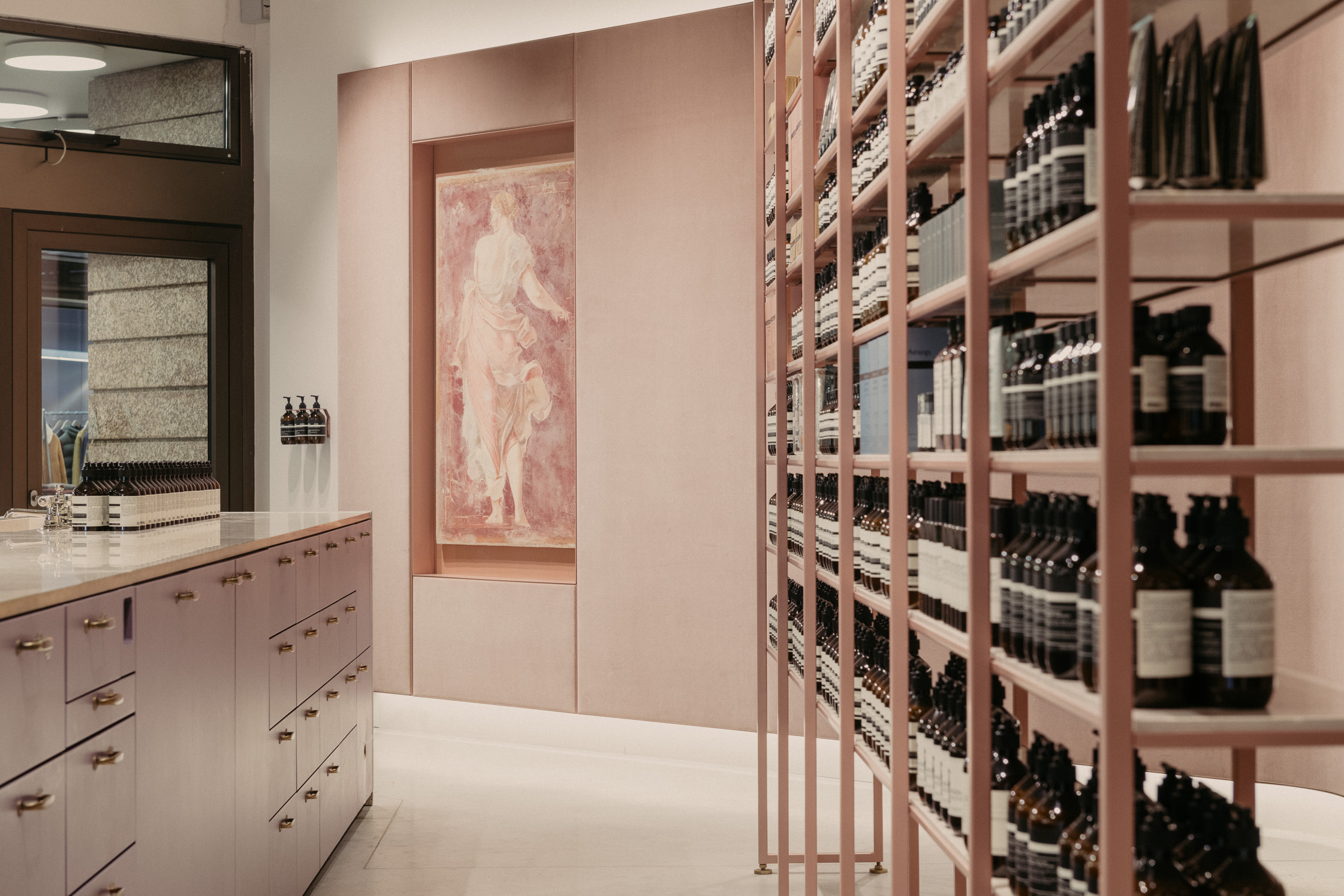
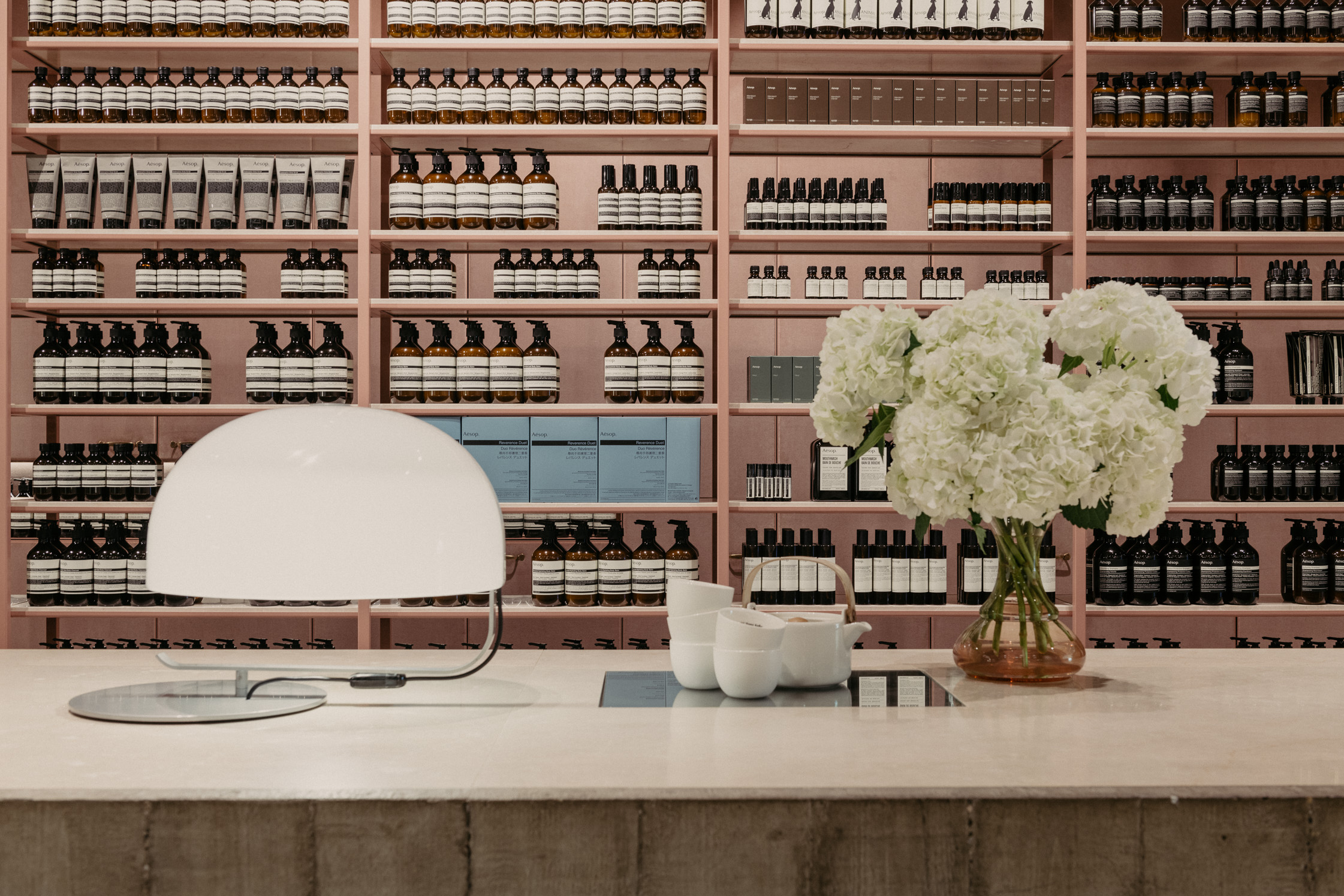
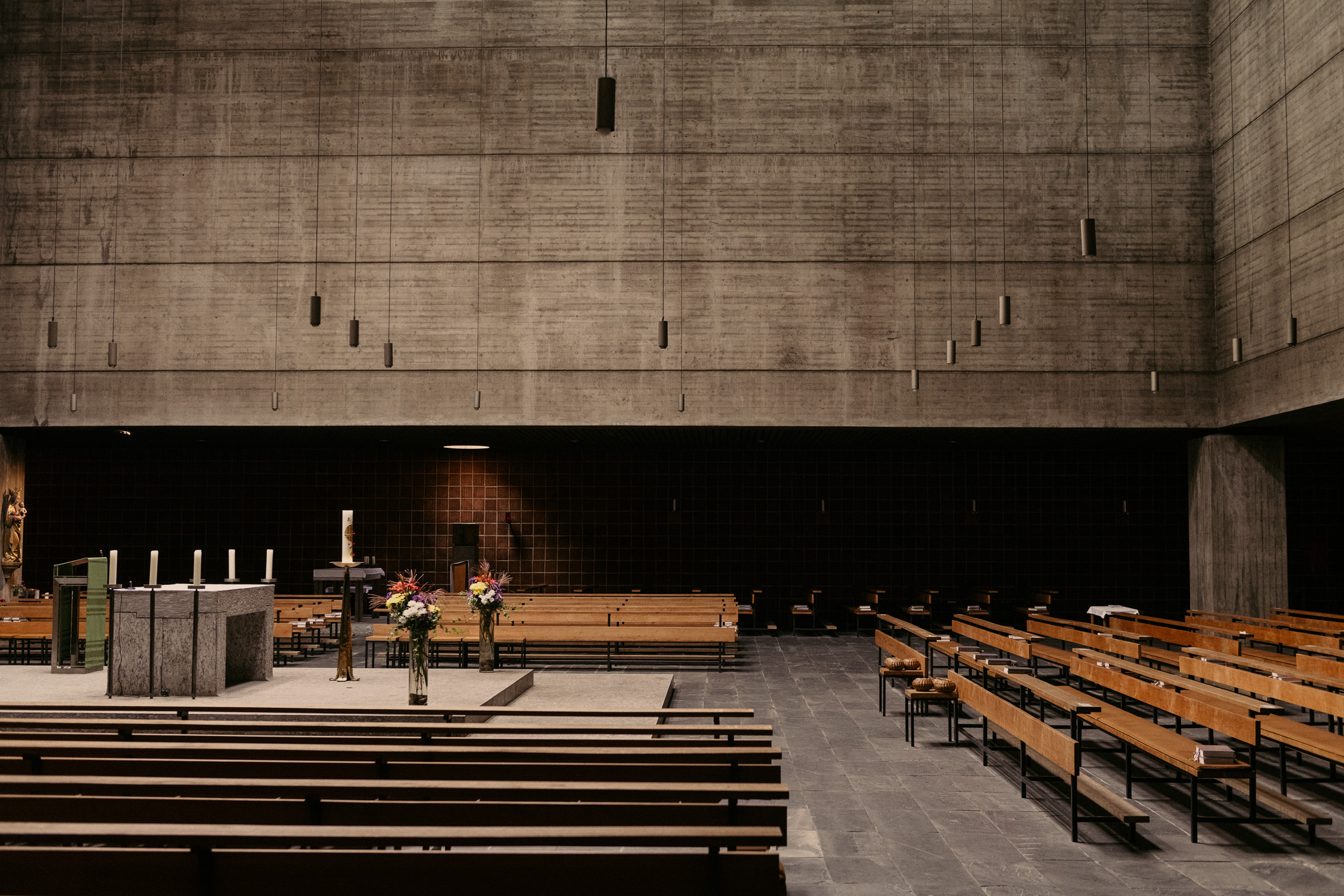
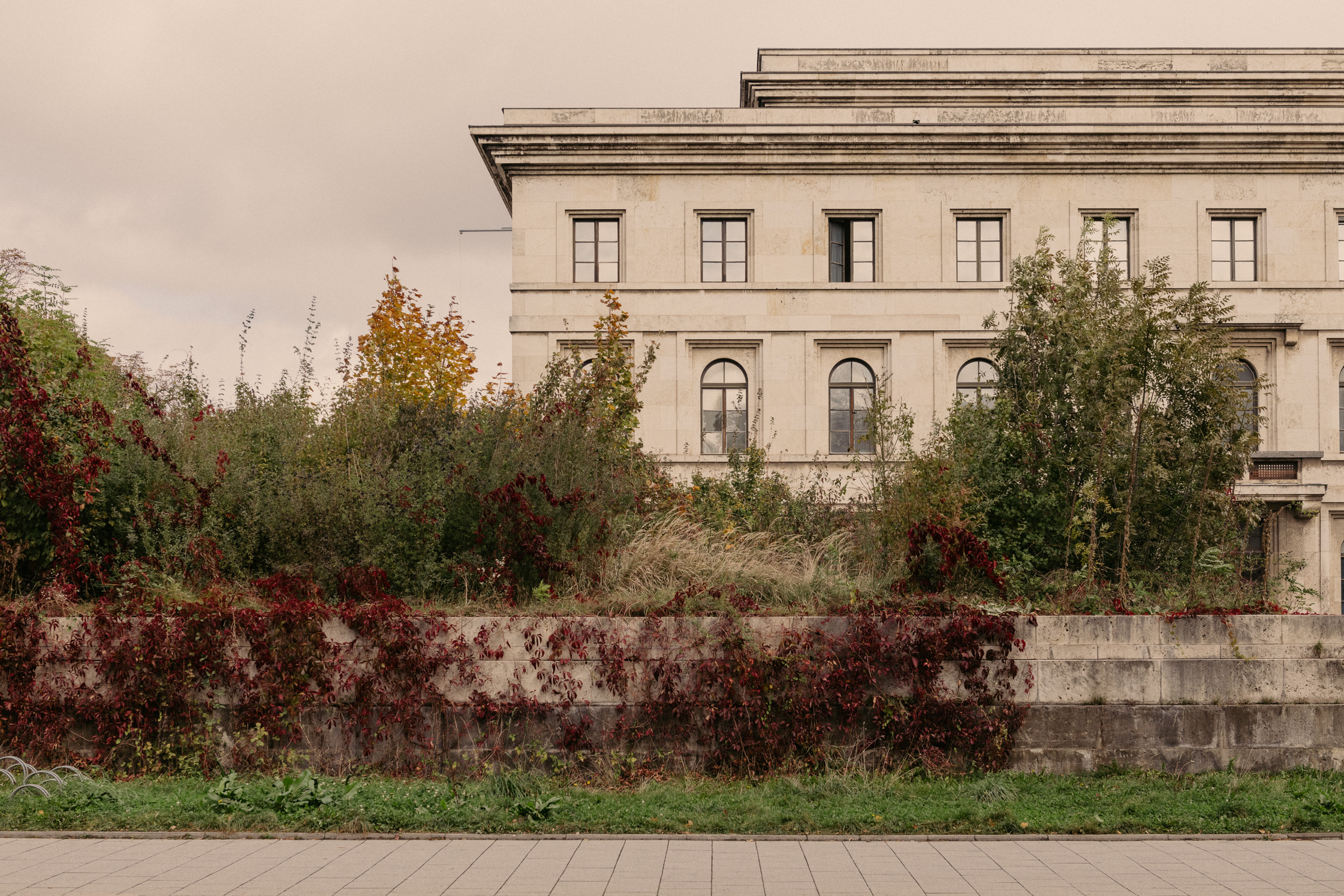
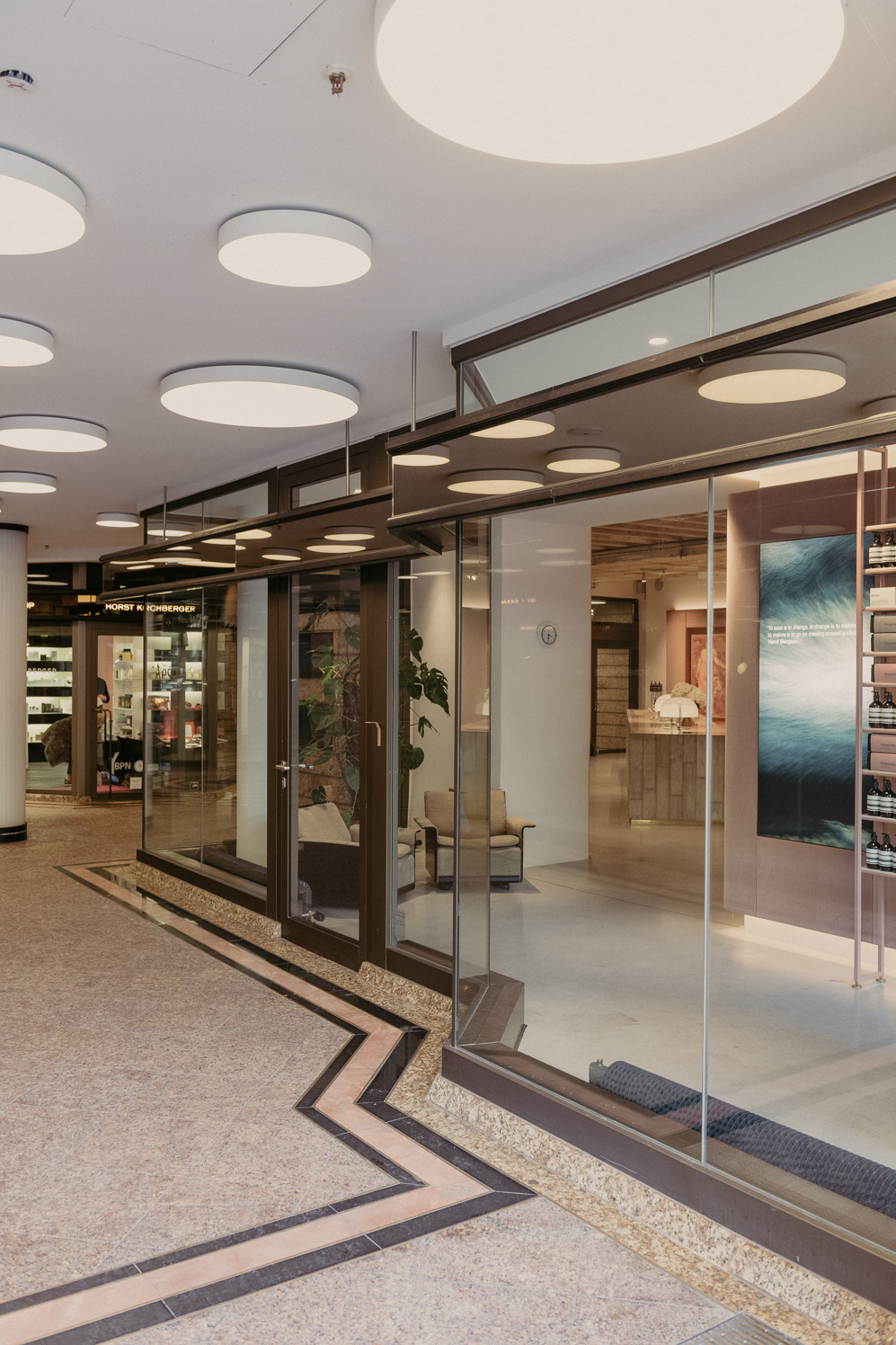
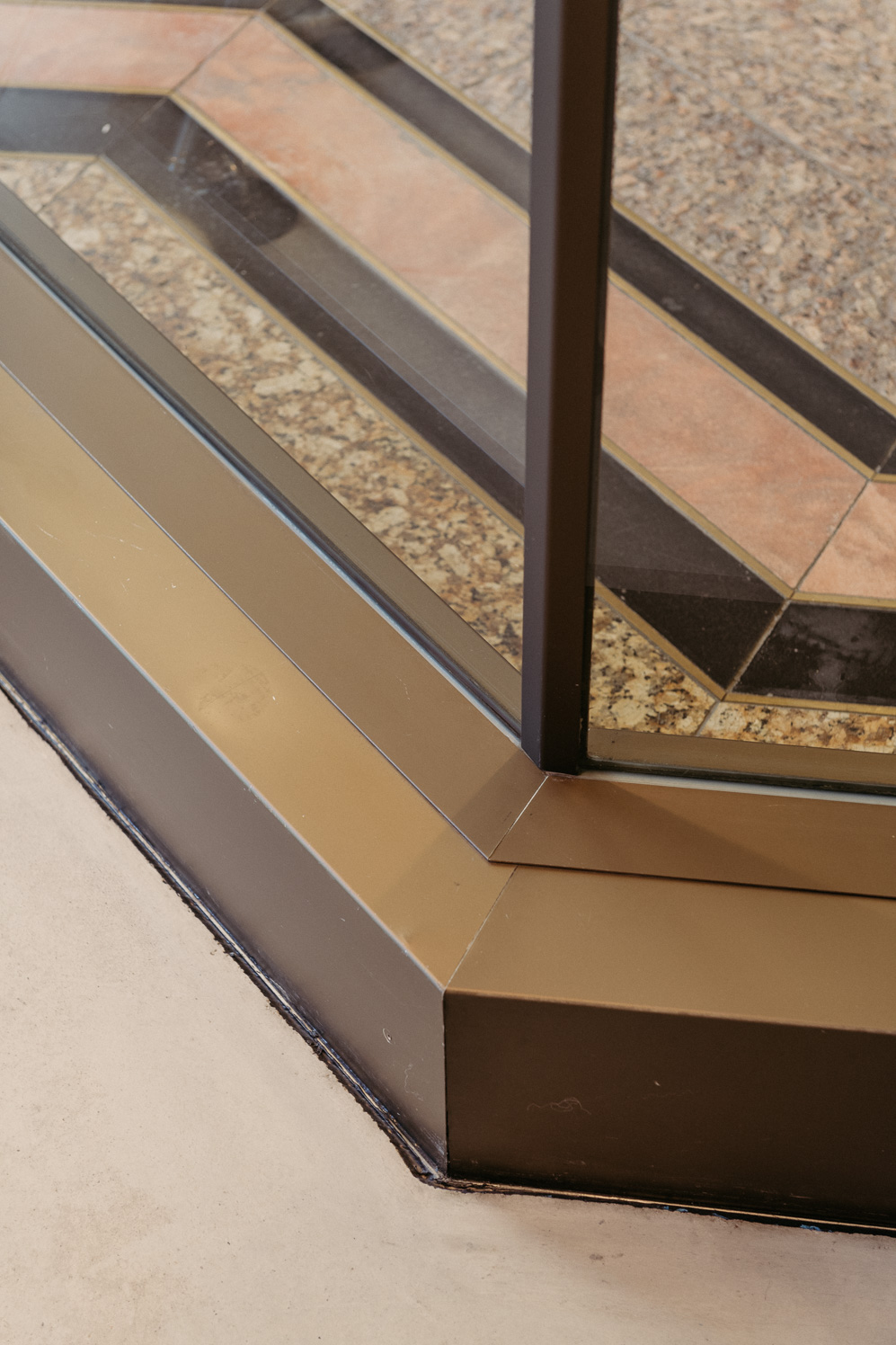
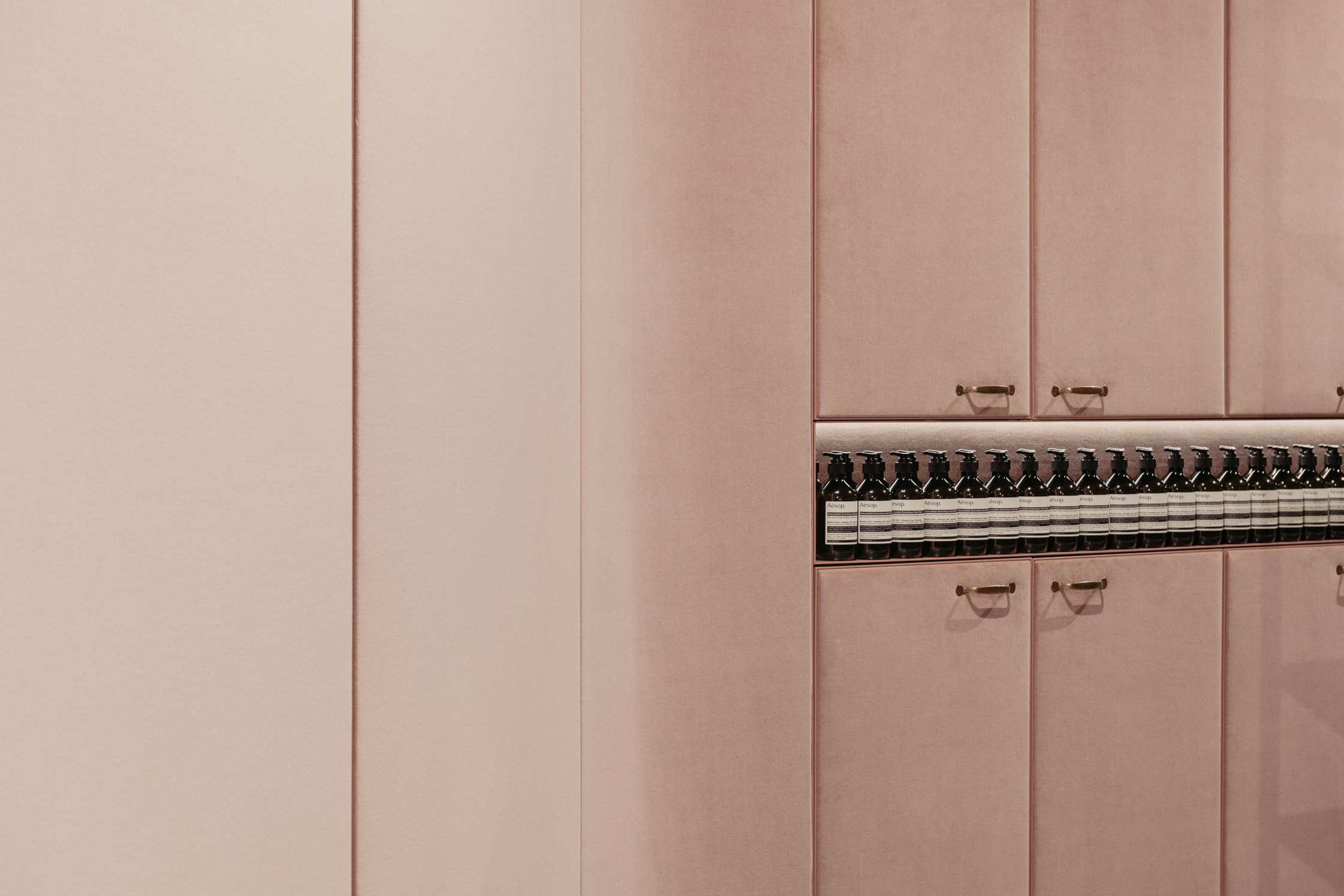

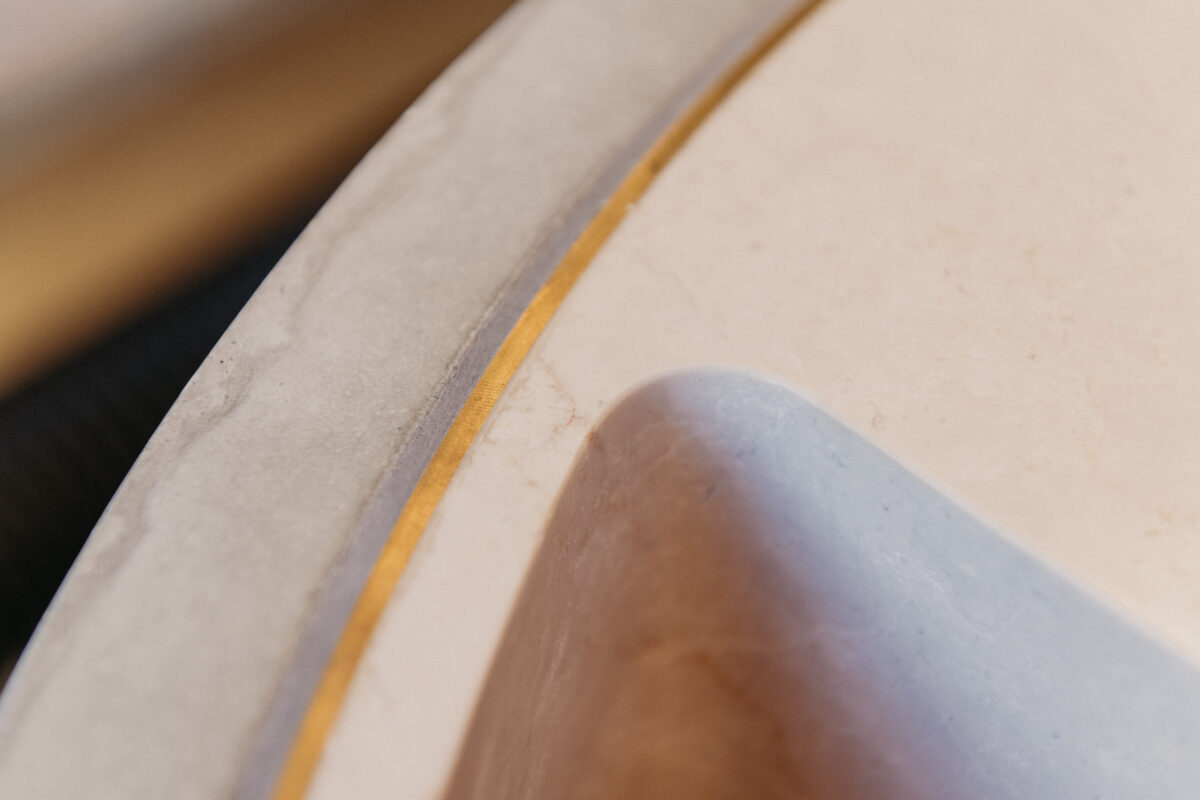
Munich’s overall image is influenced by its contrasts; coffee house culture and national socialism, fascism, and wealth. There is Cafe Luitpold, with 2,000 seats the biggest of its kind in Europe after its opening in 1888, where aristocrats and the upper class rubbed shoulders with artists, students, and ordinary people; this is also where Bavaria’s women’s right movement commenced. “Live and let live” always remained a phrase to live by in Munich—until National Socialism arrived. The regime’s control centers were located just a stone’s throw from the Luitpold complex; the Gestapo’s headquarters, or the representative area of the party, including the “Brown House”, the base of the NSDAP.
Many haunts act as reminders of the city’s darkest period, when Munich evolved as the “capital of movements” from where Hitler set his rise to power in motion: the Olympia Park, including its signature hills, that was constructed on the war’s wreckages; the arts center Haus der Kunst that was formerly dedicated to German art; the Königsplatz where marches and book burnings were celebrated; and the Luitpold complex in front of which a flame burns to commemorate the victims of the Nazi tyranny. Inside, concrete beams still recall the building’s war-related destruction. “This wound represents what happened in the past; remnants often appear natural in the city,” Thiersch says. In the ’80s, to reinvigorate the passage, older generations planted palm trees and added golden pilaster strips and pink-colored granite with stairs and turrets.
“It’s important to note: It’s not all beautiful. You also have a responsibility for the city and its history.”
At the Aesop signature store, which is located inside the Luitpold complex, there is a corresponding application that, at first glance, resembles a boudoir; the store’s back wall is dressed in dusky rose-colored velvet, yet it transitions into a roughly boarded, spartan ceiling that is held together by a gigantic beam. A seven-meter-long concrete casted counter sits at the core of the store. Designed by the architects with a brutalist, hard monolith in mind, only the velvet fabrics, drenched in sunlight, and a marble worktop tame the counter’s momentum, their kaleidoscopic features condensing the concrete form. The product shelf that is accessible from both sides and whose floors are made of pink marble hands the stage to furnishings of softer shapes. One shelf, which belongs to the window display, consists of golden profiles reminiscent of a newfound high-handedness that emerged during the war, which is inseparable from Munich.
“To combine rugged concrete and soft velvet in a way that makes them indivisible—without being too obvious,” says Thiersch. Celebrating divergence and single bricks that, in combination, create a harmonious togetherness: “Interior design can do more than just make something visually more appealing. It can approach a person in a different way, on a deeper level.” A Leipzig local who was astounded by the store’s design, called him up, though he could not quite articulate why. “Aesop promotes this kind of relevant design like no other brand,” Thiersch says. “It’s important to note: It’s not all beautiful. You also have a responsibility for the city and its history.” Creating a shared vision with Aesop allows for design that, as Thiersch points out, “reconciles beauty and trauma, wealth and blame, courage and fear.”
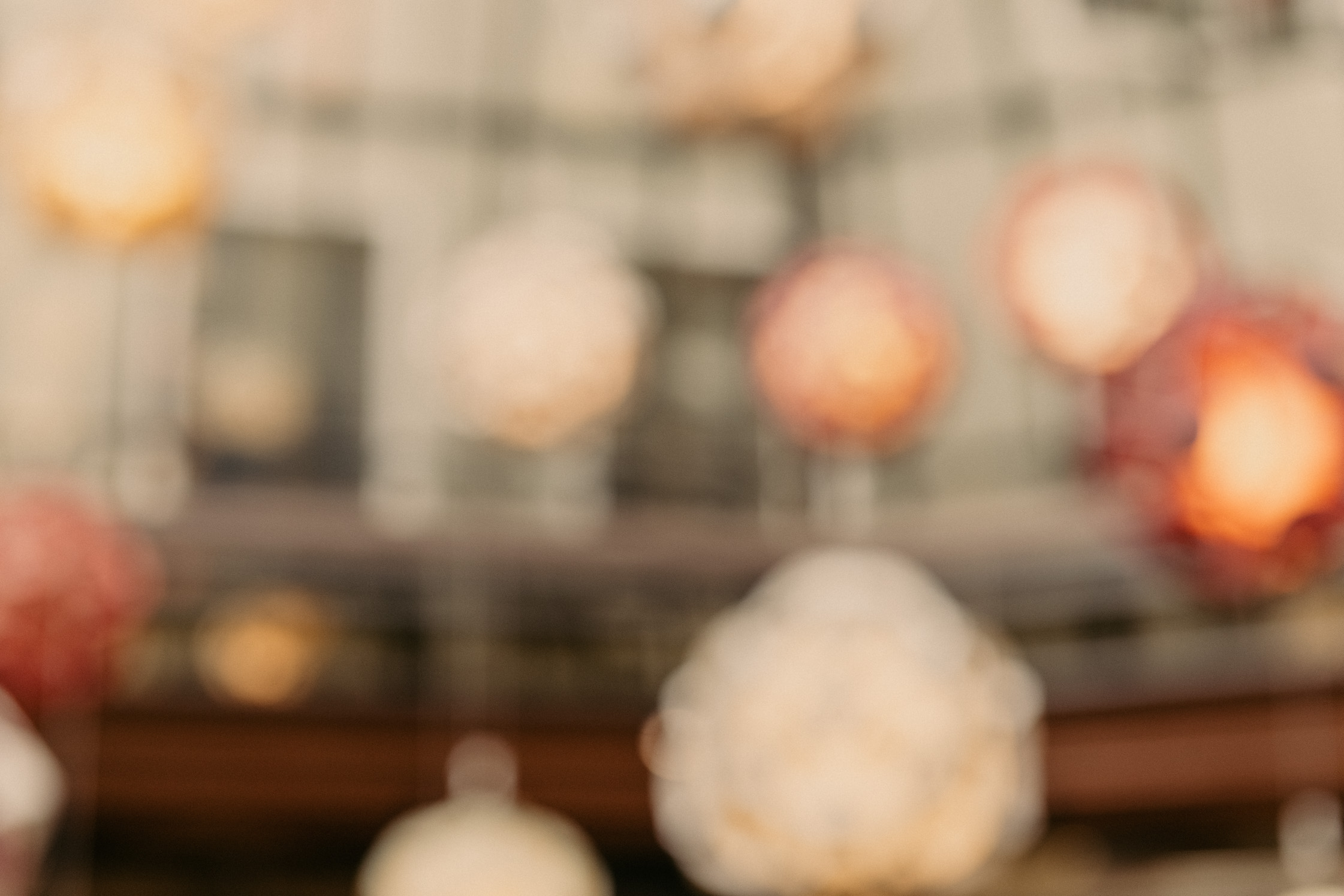
Aesop is renowned for its high-quality skin care. Their objective has always been to formulate skin, hair and body care products of the finest quality; they investigate widely to source plant-based and laboratory-made ingredients, and use only those with a proven record of safety and efficacy.Founded in Melbourne in 1987, the company follows an independent approach in the field of product study and development. Aesop’s signature stores, their locations and designs are conceived with the same care and precision as their product formulas. The brand strives to integrate the frameworks of a place and to create individual store identities for which local design vocabulary is just as pivotal as an awareness of history. The online compendium Taxonomy of Design documents this design approach and the principles behind the different stores.
Text: Florian Siebeck
Photography: Robert Rieger
